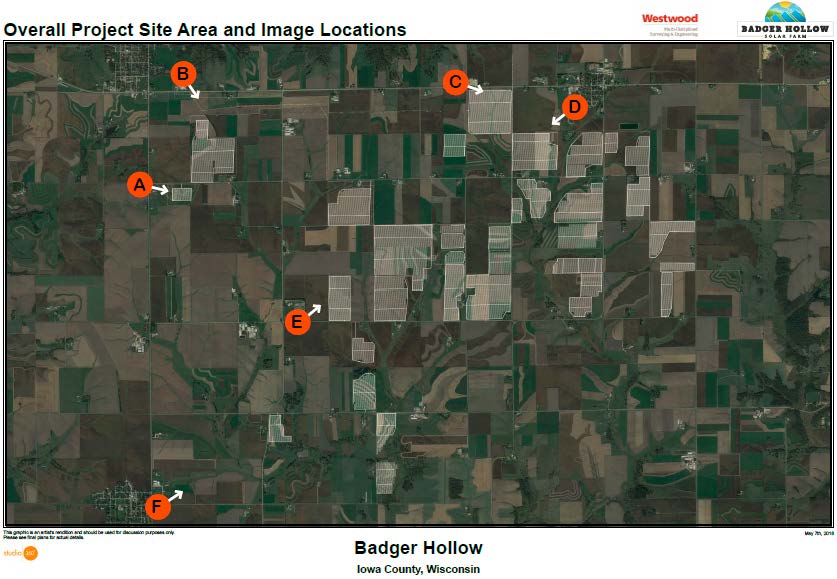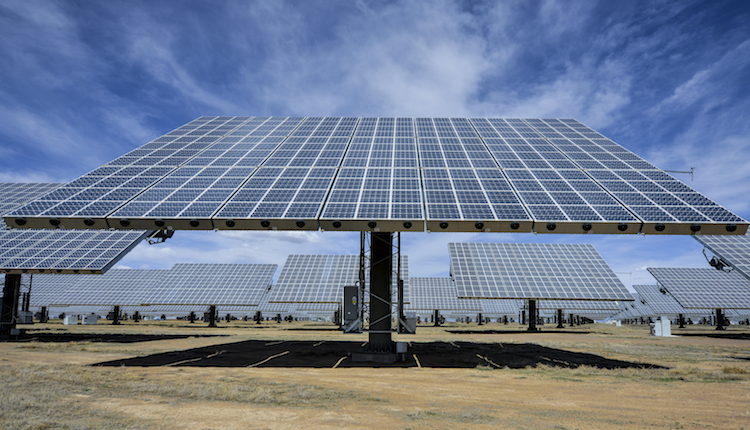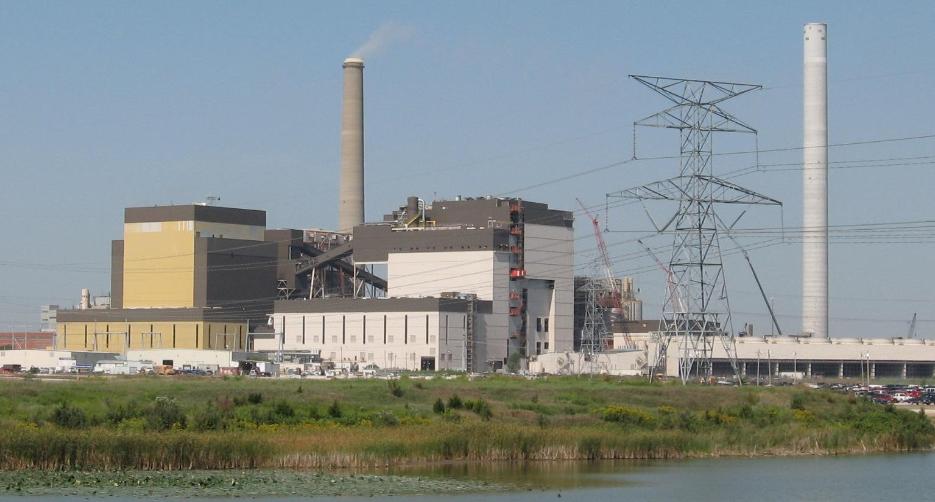Solar Rulemaking Petition on file at WI PSC
December 12th, 2018

Does anyone else think it odd, when solar projects in Wisconsin are in the 2-10MW range, to apply to site the 300MW Badger Hollow solar project when there are no rules? Yeah, I know, it sounds like Minnesota siting 2,000+ MW of large wind projects with no rules and using small wind standards, way too similar. But this is real. 300MW of solar is a LOT of solar. It’s central station solar. It’s on some of the best ag land in Wisconsin. And it just happens to be on the route of the proposed Cardinal-Hickory Creek transmission line!
What to do? Rulemaking, of course. Yeah, we know how that goes (PUC denies Reconsideration re: Wind Rulemaking), but without rules, how will they reasonably site this project? Without rules, how will they reasonably site any solar project? So of course here we go, the Jewell Jinkins Intervenors’ solar rulemaking petition:
Petition for Rulemaking_JJI_Solar_FINAL_Signed
And Wisconsin’s PSC “ERFed” it today. It’s docket 1-AC-254. It’s my understanding that a comment period will be announced and then the Commission will decide whether or not to proceed with rulemaking.
WI Petition for Rulemaking – Solar siting rules are needed
December 7th, 2018
 Photo of DOE project in Alamosa, under 30 MW
Photo of DOE project in Alamosa, under 30 MW
There’s a 300MW solar project proposed for southern Wisconsin, in Iowa County. Thing is, as with Minnesota and large wind (PUC denies Reconsideration re: Wind Rulemaking), there are no siting rules for solar in Wisconsin! Really, no rules! Typically thus far, solar projects are 2-10 MW. This one proposed is 300MW! Central station power to put it mildly.
Not only are there no siting rules, but there is no Environmental Impact Statement required for a project covering 3,500 acres!
WHAT?!?!
So on behalf of Jewell Jinkins Intervenors, I’ve just filed this Petition for Rulemaking to get them going on solar rules.
Petition for Rulemaking_JJI_Solar_FINAL_Signed
We shall see what, if anything, they do.
Nov. 14th – PPSA Annual Hearing!
October 22nd, 2018

It’s that time of year again, and for a change, no reminder necessary, AND it’s in 2018, not crammed in at the very end of year or beginning of next!
It’s the POWER PLANT SITING ACT ANNUAL HEARING!

This is our opportunity, as those wrestling with the state’s siting laws and rules, and absence thereof, to tell them what does and doesn’t work. Then the Administrative Law Judge files the report and it’s ignored for another year.
Frustration with lack of response was what triggered the multiple rulemaking petitions I’ve filed, on my own as individual, and representing Goodhue Wind Truth, most recently:
Wind Rulemaking — Petition for Reconsideration
We used to have a pot-luck for the PPSA Annual Hearing, until the PUC put the kibosh on that. GRRRRRR! Treats is the best way to get people to show up.
Now’s the time, show up, spout off, and tell them what works and what does not. And note that aspects of the Power Plant Siting Act DO apply to wind:
216F.02 EXEMPTIONS.
(a) The requirements of chapter 216E do not apply to the siting of LWECS, except for sections 216E.01; 216E.03, subdivision 7; 216E.08; 216E.11; 216E.12; 216E.14; 216E.15; 216E.17; and 216E.18, subdivision 3, which do apply.
More FAKE NEWS from Center of the American Experiment
April 21st, 2018

Center of the American Experiment is at it again, twisting obvious facts, and losing credibility in the process, well, not that they have any… They must be getting paid big bucks to continue this distortion and disinformation campaign. And maybe it’s just an attempt to get their name out there, as if they’re a “think” tank, and not a tank of hot air.
Your Taxes, My Friend, Are Blowing in the Wind
There are issues with wind, particularly about siting — the way projects steamroll into communities, putting up turbines too close to people who are already there — bringing the nuisance to the people where the community does not consent. Very valid issues, particularly where wind companies, on top of that, are violating their permits. We as a society need to address these issues now so that people are no longer steamrolled, and we need to figure out a way to deal with projects already improperly sited. If not, well, it’s hard to imagine how any wind project could be sited going forward!
What’s Center of the American Experiment up to? This time, it’s about wind subsidies, and they’re again milking that bogus report for whatever they can — please read it carefully and rip it apart — it’s not worth the mb it’s printed on:
What’s wrong with their take on subsidies? Well, they’re on a rant about taxes and pick out wind subsidies, because they want to bash wind, but they don’t address the subsidies for all other sorts of generation. DOH! That means that the issue isn’t subsidies, it’s wind.
Worse, they start out about Warren Buffett and tax benefits he gets from his wind projects. Yup, that’s there. But earth to Mars, he has a lot more invested in coal.
Warren Buffett owns BNSF which ships coal around the Midwest. BNSF is also a major Bakken BOOM! oil transporter, the impetus for the $5 billion Amtrak deal with BNSF for rail, crossing, and safety upgrades.

Warren Buffett owns the MidAmerican Energy Center, 4 coal plants, which includes the “Walter Scott, Jr. ” 790 MW coal plant — the largest in Iowa. It cost $1.2 billion to build, and was completed in 2007, just in time to start utilizing the biggest transmission build-out in history!
Just the Facts – Walter Scott, Jr. Energy Center’s New 790 Megawatt Unit
Center of the American Experiment says about transmission that:
Transmission is needed for all generation, none but rooftop solar is at the load. Cost of transmission is not in any PPA. FERC requires that transmission not discriminate against or favor particular types of generation — what is there is what goes over the wires. And whatever the generation source, cost of transmission does show up in rates. Utilities get more from capital investments, a/k/a as transmission, than from selling electricity.
And then there’s the basis for that transmission build out — to displace natural gas with coal:
And “the cost of running conventional power plants as backup sources of electricity” Natural gas peaking plants are what’s used for backup for wind, they kick in only when needed, and that’s not often. Further, solar follows peak. Back up occurs when the variable source isn’t running, it’s not simultaneous, not duplicative, DOH! It’s duplicitous!
As to rates: Xcel’s rate case 15-826, is there for reading, but you seem to ignore the filings. Center of the American Experiment has been silent on Xcel’s e21 “business plan” rate scam and the current bill to change cost review and rate recovery for Prairie Island. Where’s theirconcern about rates when rates are at issue? Oh, right, weighing in on a rate case might involve facts.
Enough of Center of the American Experiment’s repeated disinformation, misstatements… just stop.
Xcel demand down, down, down
September 28th, 2014
I’ve been saying this for so many years, that electric demand is down, down, down, and instead, Xcel Energy (and all the others) have been saying it’s going UP, UP, UP (even though Mikey Bull said years ago that they wouldn’t need power for a while), and they’re applying for and getting Certificates of Need for all these permits for utility infrastructure that are obviously designed to market and sell the surplus, and the Public Utilities pretends to be oblivious (I say “pretends” because I cannot believe they’re that unaware and uninformed.).
This is a must read:
Here’s the short version from Xcel:
2024 is expected to be about what it was back in 2007, the industry peak year. DOH! But note this — there’s a “small capacity surplus in 2016.” DOH!
And given the surplus which we’ve known has been present and looming larger, that’s why they then ask for withdrawal of the Certificate of Need for the Prairie Island uprate because it isn’t needed (and really, that was just what, 80 MW or so? Or 80 MW x 2 reactors, 160 MW?). If they don’t need that small uprate, why on earth would they need so much more?
But what do I know…
Hollydale Transmission Line was clearly not needed, and they withdrew that application…
CapX 2020 transmission was based on a 2.49% annual increase in demand, and for Hampton-La Crosse in part supposedly based on Rochester and La Crosse demand numbers, yeah right, we know better, but that was their party line. Again, DOH, it didn’t add up to needing a big honkin’ 345 kV transmission line stretching from the coal plants in the Dakotas to Madison and further east, but who cares, let’s just build it…
ITC MN/IA 345 kV line — the state said the 161 kV should be sufficient to address transmission deficiencies in the area, but noooooo, DOH, that wouldn’t address the “need” for bulk power transfer (the real desire for the line).
Here’s a bigger picture of the bottom line (I’m accepting this as a more accurate depiction, not necessarily the TRUTH, but close enough for electricity), keeping in mind that these are PROJECTIONS, and that they’re adding a “Coincident Peak adjustment” which should be included in the “peak” calculations):
Notice the only slight reduction in coal capacity, just 19 MW, nuclear stays the same, a 320 MW decrease in gas, a 128 MW reduction in Wind, Hydro, Biomass, which I hope includes garbage burners and the Benson turkey shit plant , slight increase in solar of 18 MW, and Load Management also a slight increase of only 80 MW. This is Xcel Energy with its business as usual plan, which has to go. We can do it different, and now is the time.
Will someone explain why we paid so much to uprate Monticello, and paid to rebuild Sherco 3?
From the archives:
500+ give LS Power a piece of their mind
October 20th, 2009
2012 NERC Long Term Reliability Assessment
May 7th, 2013
PJM Demand is DOWN!
November 15th, 2012
Transmission? It’s NOT needed!!!
October 18th, 2012
Xcel shelves projects, admitting demand is down
December 3rd, 2011



